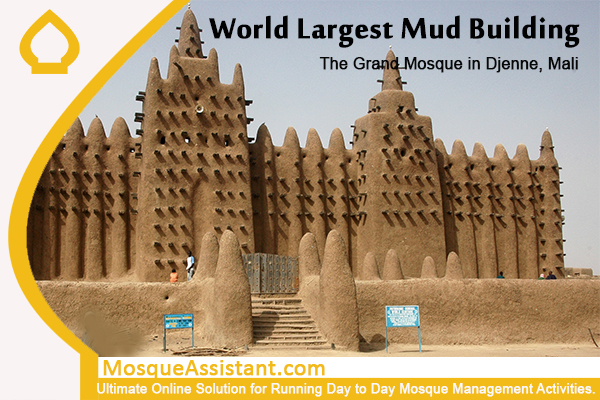
The Grand Mosque in Djenne, Mali, is the largest mud building in the world measuring 100 m (328 ft) long and 40 m (131 ft) wide. The present structure was built in 1905, based on the design of an 11th Century mosque. Rendered annually, it is surmounted by two massive towers and inside is a forest of vast columns taking up almost half of the floor space.
The walls of the Great Mosque are made of sun-baked earth bricks (called ferey), and sand and earth based mortar, and are coated with a plaster which gives the building its smooth, sculpted look. The walls of the building are decorated with bundles of rodier palm (Borassus aethiopum) sticks, called toron, that project about 60 cm (2.0 ft) from the surface. The toron also serve as ready made scaffolding for the annual repairs. Ceramic half-pipes also extend from the roof line and direct rain water from the roof away from the walls.
The mosque is built on a platform measuring about 75 m × 75 m (246 ft × 246 ft) that is raised by 3 meters (9.8 feet) above the level of the marketplace. The platform prevents damage to the mosque when the Bani River floods. It is accessed by six sets of stairs, each decorated with pinnacles. The main entrance is on the northern side of the building. The outer walls of the Great Mosque are not precisely orthogonal to one another so that the plan of the building has a noticeable trapezoidal outline.
